Excerpts from Jim Conrad's
Naturalist Newsletter
entry dated September 26, 2022, issued from near Tequisquiapan, elevation about 1,900m (6200 ft), N20.565°, W99.890°, Querétaro state, MÉXICO
GRAPE-SCENTED SAGE
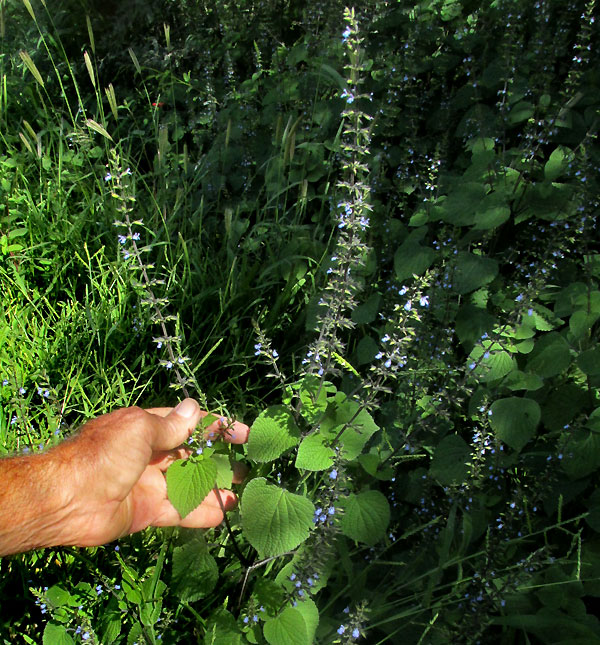
At the weedy edge of a hedgerow of mostly Smooth Mesquite trees, the above wildflower produced strikingly long racemes of blue flowers and handsome, heart-shaped leaves. An impressive thicket of them grew where most of the day they were shaded by the mesquites.
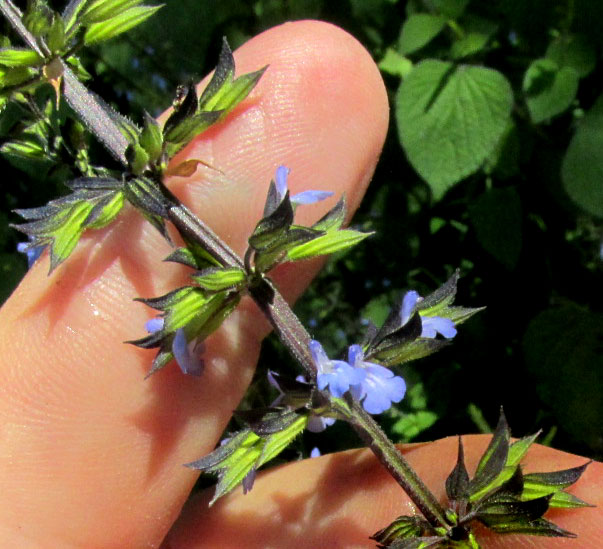
Up close, the raceme's stiff rachis was purple and square in cross-section, with a shallow channel between the four corners. The small, blue flowers were arranged in widely spaced whorls, or verticils, with ten or so blossoms spreading in all directions at each point of attachment. Gardeners will recognize the squared rachis and verticils of flowers with bilaterally symmetrical corollas and calyxes as very like that of their basil and spearmint plants, members of the Mint Family, the Lamiaceae.
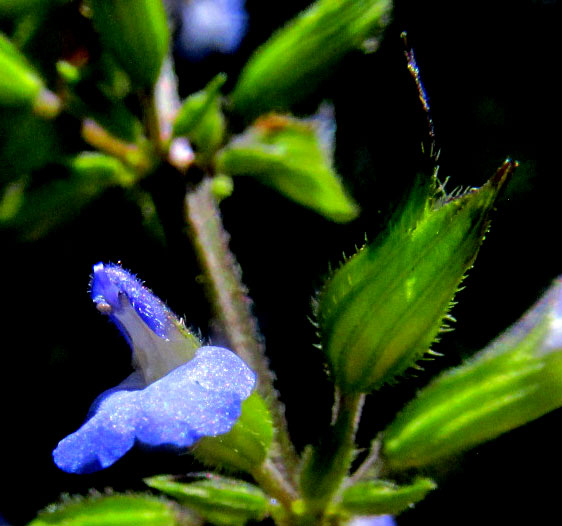
Up closer, the blue corolla shows features of the Mint Family's largest genus, Salvia, which may include as many as nearly 3000 species. Mexico is one of the salvias' centers of diversity. If you have a Mint Family member whose flowers produce only two stamens, and those are modified with a sort of lever projecting from their short filaments (as I've illustrated here), and the tip of the corolla's upper lip is pulled together like a monk's hood, you have a salvia. Note the short hairs atop the corolla's rounded, upper-lip "hood." There's a species just like our plant in which the corolla-top's hairs are sharply pointed, and another species also just like our plant whose hairs atop the corolla are tipped with tiny glands. To me, the hairs seem more gland-tipped than sharp pointed.
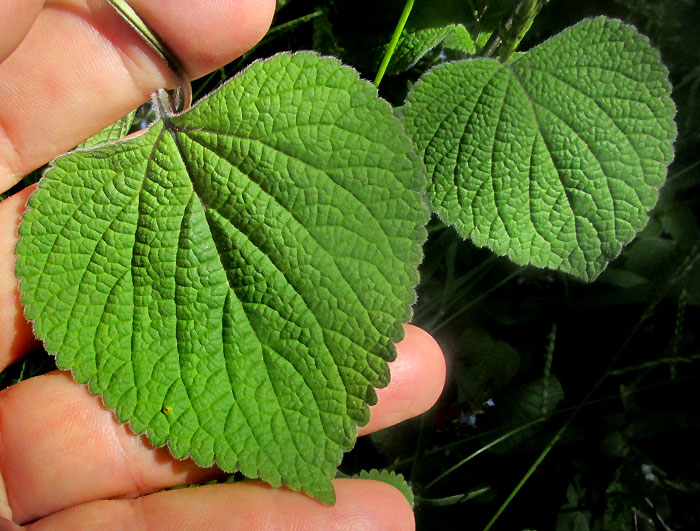
The leaves were intricately wrinkled, or "rugose," and their margins were attractively crenulated with rounded teeth. The crenulations themselves were edged with very fine, white cilia. Altogether, the plant prescented a kind of stately, self-possessed appearance.
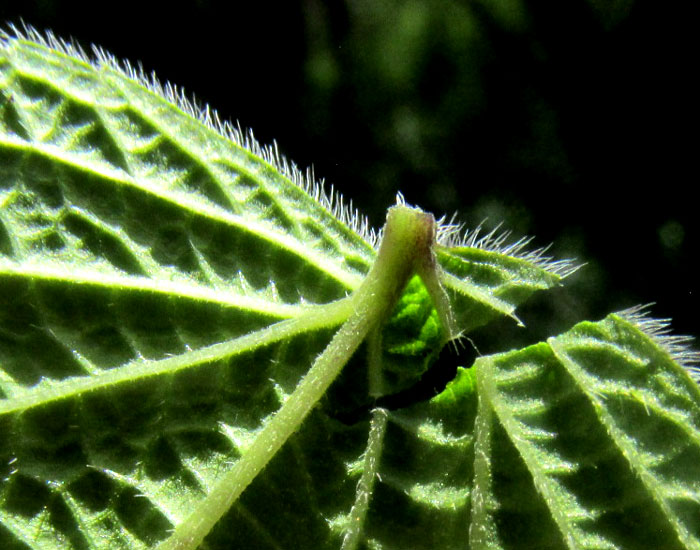
Up close, the leaves' undersurfaces were even more spectacular. Note that the undersurface bears few hairs, an important field mark for this species.
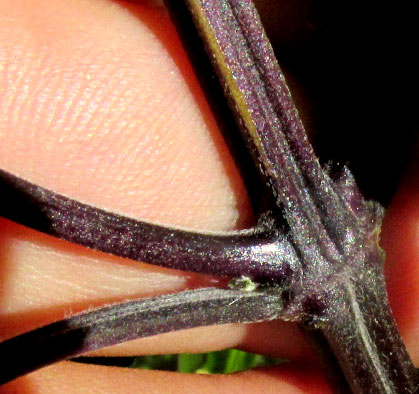
Even the sturdy, stiffly erect, frequently branched and determinedly squared stem was impressive.
In the 2013 study by Martha Martínez-Gordillo and others entitled "Géneros de Lamiaceae de México, diversidad y endemismo," I read that in Mexico around 300 species of the genus Salvia have been documented, of which some 232 are endemic, found in no other country. The worldwide genus Salvia is segregated into various subgenera and sections, and in general Mexico's species belong to the subgenus Calosphace. Happily, the endemic species in the Scorodoniae section of the subgenus are nicely treated in a 2017 work by Edgar Ismael Overa Mendoza and others entitled "Revisión taxonómica de Salvia subgénero Calosphace sección Scorodoniae (Lamiaceae), endémica de México." Our plant is illustrated and profiled there, down to having drawings of the hairs on its calyxes, and the shape of its leaves.
Our plant, identifiable by its non-branching hairs and the hairs on the calyx bearing long hairs without glands, plus its heart-shaped leaves and blue flowers, is SALVIA KEERLII. If the calyx hairs were glandular, then it would be the very closely related and similarly appearing Salvia melissodora.
Salvia keerlii is endemic just to Mexico, generally occurring in semiarid upland Mexico, except for the northwest and Baja, and south to Oaxaca. It likes scrub and forests of juniper.
The 2022 study by Nancy Ortiz-Mendoza and others entitled "A Review on the Ethnopharmacology and Phytochemistry of the Neotropical Sages (Salvia Subgenus Calosphace; Lamiaceae) Emphasizing Mexican Species," cites studies reporting that Salvia keerlii contains essential oil that is both antifungal and insecticidal.